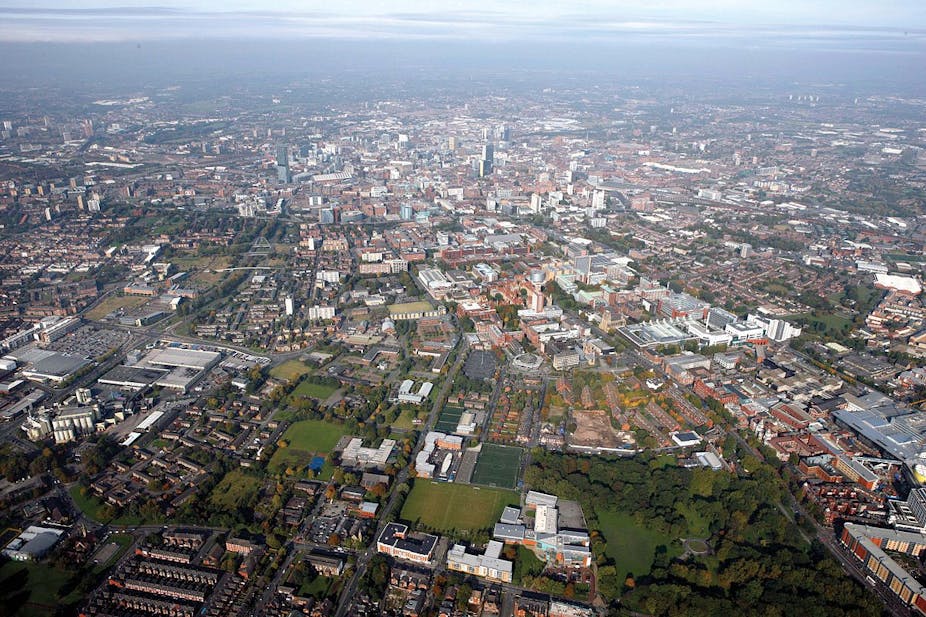The UK’s economy is highly unbalanced; we have the worst regional disparities in the developed world and London’s property prices are also the world’s most expensive – second only to Monaco. Rebalancing the economy is crucial to our future, and it can be done.
With the right investment in transport infrastructure, a second megacity formed by linking Liverpool, Manchester and Leeds, is achievable and could rebalance the UK economy by shifting focus from the dominating south-east.
This could be achieved by creating an economic powerhouse in the north, one that replicates the very factors that underpin London’s growth: a large and diverse population and economic base, the ability to attract and retain talent, a critical mass of smart professionals and super-creatives, excellent science institutions, universities and schools, vibrant arts and culture and a first class regional, national and international transport.
It’s a tall order. Even the best of the Britain’s second-tier cities would struggle to deliver all this. None of them is big enough – and we know that in modern economies size does matter. Geoffrey West, a physicist at the Santa Fe Institute, has analysed the mathematics of cities and says that there is a rule that holds firm in cities across the world.
According to West, each doubling in size of a city brings with it a 15-20% increase in wages, number of patents filed, the number of highly creative people employed, and an increase in efficiency of transport systems, among others. At the same time there is a matching increase in crime and pollution – but the benefits of higher wages and greater opportunities outweigh these disadvantages.
Can transport drive the north forward?
London reflects this urban mathematics. Outside the Greater London region there is perhaps only one place in the UK where these economies of scale could be replicated: in the heavily urbanised east-west belt that stretches from Liverpool, through Manchester and over the Pennines to Leeds. These three city regions have scale, dignity and presence. They also have a massive asset in Manchester International Airport. Their universities are among the country’s leading research institutions and decent housing is affordable – especially for the young professional families now being priced out of London’s housing market or forced to accept crippling commuting and mortgage costs.
Manchester and Leeds are dynamic cities with a strong track record in delivering new jobs. Until recently, Liverpool’s record on jobs was shaky. But it has made a startling recovery based on tourism and conferences, as well as its traditional sectors.

Higher speed rail connections between Liverpool, Manchester, Leeds (and perhaps Sheffield) could reduce the Liverpool-Leeds journey time to only 50 minutes, bringing together the cities’ labour markets, generating critical mass and driving the creation of agglomeration economies from bringing the cities closer together.
David Higgins, chairman of HS2, drew attention to this issue in a recent speech – as did chancellor of the exchequer George Osborne this week.
The plan exists, but little action yet
Peter Hall, David Thrower and I set out detailed proposals for “High Speed North” in April 2014, building on the extremely modest Northern Hub investment and electrification between Liverpool and Leeds which is already committed or in progress.
These began with the introduction of the Pendolino “tilting trains”, required to cope with the steep gradients and sharp curves on the trans-Pennine route. It also included a reintroduction of four-tracking – a railway dual carriageway, with two tracks travelling in each direction – to provide greater capacity and allow fast trains to overtake slower services. The proposals also called for local trains in Manchester to be rerouted onto new sections of the Metrolink tram system.
For later stages of the project, we proposed a new 20-mile route from Warrington to Liverpool, which would become part of the High Speed North network and a vital high speed connection from HS2 to the centre of Liverpool, increasing capacity on an increasingly busy passenger and freight route. And finally, a new 13-mile “base tunnel” under the Pennines from Manchester to Huddersfield – startling as it may sound, new rail tunnels are not uncommon in other countries such as Germany.
The evidence we have seen on comparable tunnels suggests a range of construction costs between £1.5 and £4 billion. London’s Crossrail, which is of similar length, has cost £16 billion.
The chancellor’s Manchester speech this week did bear an uncanny resemblance to our earlier ideas. Was it plagiarism, thought leadership or just a bizarre coincidence? We don’t know and we don’t mind. For once, the government is running with a big, imaginative and relatively inexpensive idea.
To be sure other things need to happen in these northern cities. But the Chancellor’s proposal should be explored further, not dismissed as another bright idea that will end up in a cupboard after the next general election.

